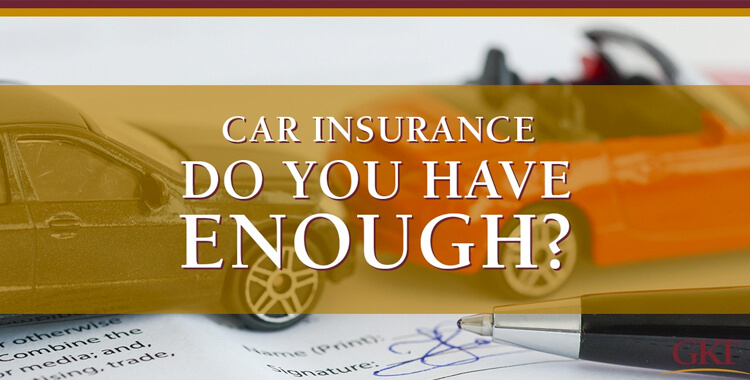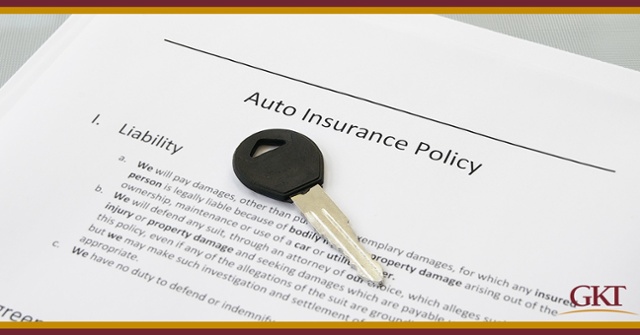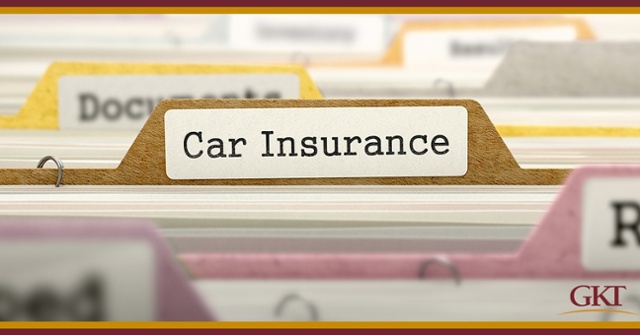
“After an accident is no time to learn that you did not have full coverage, or you did not have the proper coverage” – Christopher Turak, car accident lawyer and partner at Gold, Khourey & Turak
If you’re like most people, you probably look at your car insurance policy only when it comes up for renewal. You may not even completely understand exactly what your policy entails but believe you have “full coverage.” So you make the payments each renewal period thinking that you are fully protected and because the law requires all drivers to have insurance.
Insurance is big business, and it’s no surprise that we see commercials for car insurance during our favorite tv shows and during the big game. Each company tells us that they are on our side and to place our trust into their hands. I am a car accident lawyer who has helped hundreds of clients with their automobile claims, and I have reviewed hundreds of insurance policies. But before you decide to switch and save 15% on car insurance, you should ask yourself. . .
How Much Car Insurance Coverage Do I Really Need?
Whether you step into an office or try and figure it on your computer, there are plenty of options to choose from when selecting car insurance. It’s important to understand that car insurance is a la carte. Depending on the state, some coverages are mandatory, such as liability and uninsured motorist coverage, while others, like underinsured motorist coverage, can be optional.
In order to know how much insurance you need, you first need to know what each coverage on your policy does. Here is a short description of the most important coverages.[1]

Liability Coverage protects you when you cause an accident in which someone else suffers either personal injury or property damage. When they make an automobile claim for their losses, your insurance company steps in and resolves the claim as opposed to you paying for the losses out of your pocket. Every state requires this coverage.
Uninsured Motorist Coverage covers you for your losses, both personal injury and property damage, in the event you are injured by an at fault driver who has no insurance. In other words, your insurance company pays you for your losses when the other driver, who caused the accident, doesn’t have insurance. Unfortunately, there are lots of people illegally driving around without insurance which is why this coverage is mandatory.
Underinsured Motorist Coverage covers you in the event an at-fault driver is underinsured or does not have enough insurance to cover your automobile claim. For example, you’re in a car or truck accident and suffer a $30,000 loss as a result of the other driver’s negligence. The at-fault driver only has liability limits of $25,000. As a result, you’re left $5,000 in the hole. Your underinsured motorist coverage steps in and makes good on the difference because the other driver did not have enough insurance. Depending on your state, this coverage is either mandatory or optional.
Medical Payments Coverage is a very simplified form of health insurance. This coverage will pay your medical bills incurred as a result of an car accident up to a set limit determined at the time you purchased it. For example, if you have medical payments coverage in the amount of $5,000, this coverage will pay your medical bills up to that amount for injuries sustained while an occupant, either a driver or passenger, of the insured vehicle. This coverage is almost always optional. If you’re injured in a accident, your car accident lawyer can help you maximize the use of this coverage.
In addition to deciding what coverages to purchase, you also need to figure out how much car insurance you want to buy. Generally, states set mandatory minimum limits for liability and uninsured motorist coverage. West Virginia, for example, requires each driver to carry limits of $25,000 per person and $50,000 per accident for personal injury and $25,000 for property damage.
Often times you will see this listed on your policy as 25,000/$50,000/$25,000. This means the most your insurance company will pay as a result of a personal injury or underinsured motorist claim to any one person is $25,000. The most it will pay for the entire car accident, regardless of the number of claimants, is $50,000. And lastly, the most it will pay for property damage, regardless of the number of other cars involved in the accident, is $25,000. If you’re involved in an accident, your car accident lawyer can review your policy and explain to you the types of coverage you have.
Each state has minimums (here is an article outlining the minimums by state)
What Happens If You Do More Damage Than You Have Coverage?
While purchasing the minimum limits may seem the most affordable and attractive option, it comes with a big risk. As a car accident lawyer, I see this all too often.
Let’s say that you cause a multi car accident involving two other cars each with two occupants. There are now potentially four personal injury claimants and two property damage claims. You have the minimum limits. That is, your insurance company will pay a maximum of $25,000 to any one person and $50,000 for the entire accident. In addition, it will only pay a maximum of $25,000 for both property damage claims.
As you can see, this might be a case when the value of the claims could exceed the limits of your coverage. The insurance company is only obligated to pay up to the limits of the policy and, as a result, you would be on the hook for the excess. So if you totaled the other guy’s brand new Range Rover, you would be personally responsible for any amount in excess of the $25,000 property damage limit. That’s a scary thought.

The Answer Is Not Just More Coverage.
The best way to avoid this risk is to purchase larger limits. The more insurance you purchase the better protected you will be. In fact you can purchase pretty much any amount of insurance you like. It’s not uncommon for some people to carry a million dollars or more of insurance. However, more insurance costs more money. Consequently, you must strike a balance between your insurance needs and your budget. If you have assets, like a home or significant savings, then you should probably have more insurance than the minimum levels. While insurance companies offer all different levels of insurance, most people are adequately protected with $100,000/$300,000/$50,000.
I have handled hundreds of cases over the years and have found that these limits usually cover most claims. I also strongly urge drivers to have both uninsured and underinsured motorist coverage in the same limits. All too often I have represented people in accidents who were not adequately protected when the other driver was uninsured or underinsured. Nothing makes recovering from a car or truck accident worse than not getting reimbursed for medical bills and lost wages because the other driver didn’t have enough insurance. Uninsured and underinsured motorist coverage is designed to protect you and your family and should be fully taken advantage of. If you ever need it, you’ll be glad you purchased it.
Lastly, medical payments coverage can really be helpful. It can help with deductibles, co-pays, and out of pocket expenses while you are recovering from your injuries. Generally, $5,000 in medical payments coverage is adequate.
Insurance Should Protect YOU.
The amount of coverage you have should reflect your personal needs and assets. When it comes to insurance, each person’s needs are different. Do not just assume you have full coverage or that you are adequately insured. Knowing your worth and what you own is the first step in selecting the right coverage. Select the right amount of coverage that will protect you and your family from financial hardships. You have worked hard and made plans for your family’s needs and your retirement. Do not risk it by being underinsured. Instead of trying to decide if you should switch and save 15%, take time to figure out how much coverage you need first.
One Size Does Not Fit All.
Your insurance needs are unique and depend on a great many factors. Take the time to sit down with your insurance agent and ask about the different available coverages. Carefully go over your needs and budget and choose a policy that is right for you. After an accident is no time to learn that you did not have full coverage.
Need help figuring out your personal assets. Here is a helpful article to get you started.
[1] While both collision and comprehensive coverages are important for protecting your automobile, a description of them will be forthcoming in a future discussion of property damage claims.
GKT Car Accident Lawyer
Injured in a car accident that wasn’t your fault? A consultation with one of our wrongful death and car accident lawyers is always free. Our car accident attorneys are available to discuss your car accident case 24/7, 365 days a year. We handle car accident cases on a contingency fee basis. That means that we don’t charge a fee unless we obtain compensation for you. If you think you have a car accident case, we are here to help.
Contact us by calling (304) 845-9750 or by live chat 24/7 at GKT.com.


